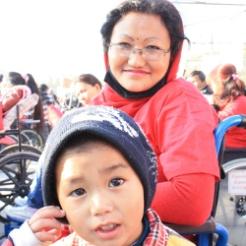Livability, the Charity Award-winning disability charity, boosted its income from £39.4m in 2012 to £40.3m last year, driven mainly by growth in voluntary donations from £2.6m to £3.4m.
Livability runs 22 care homes, one school and two further education colleges, 14 supported living schemes and 12 community-based schemes. It provides holidays in accessible hotels and offers business enterprise training to help disabled people set up and run their own businesses.
Despite pressure on public sector budgets, which is where Livability derives most of its income, and a lot of upheaval within its senior ranks, the charity finished the financial year in a good place. Stephen Perry, interim finance director, told civilsociety.co.uk: “We had a really good year under the circumstances. In a deflationary market, with immense pressure on public sector spending, we held our own in both revenue and margin terms.”
For the first time in many years the charity finished the year with more regular donors than it began with, and came close to meeting its ambitious fundraising targets. It successfully raised the £2.8m needed to begin building a new hydrotherapy pool, due to be completed this month, and now a further target of £1.7m is required to finish developing it into a multi-therapy centre.
Voluntary income increased from £2.6m to £3.4m and legacies from £4.2m to £4.8m.
The Enterprise Agency, launched in 2011 to support disabled and disadvantaged people into self-employment, secured a new contract and the charity rented out two floors of its central office building.
Livability also returned to its campaigning roots, with the launch of the Let Me In campaign that aims to ensure that disabled people are fully involved in their communities.
During the year the charity changed the way it operates, establishing six operational hubs that brought several of its services closer together and restructuring its operational management. Its annual report said that it “examined and reviewed staffing in various teams …to create a more streamlined and effective structure” but according to Perry this resulted in just three jobs being cut within marketing and communications.
No employee earned more than £100,000, compared with one who earned £100,000 to £110,000 in 2012.
Thirteen staff received packages worth more than £60,000, up from eight in 2012, but the 2013 earners included two who received redundancy payments and three who crept over the £60,000 threshold by way of inflationary pay rises. Five of the eight highest earners are principals and vice-principals at Livability’s education institutions, not head office staff.
Long-term deficit funding plans have been agreed with the trustees of both of the charity’s now-closed final salary pension schemes, and during the year the charity had to make additional payments to one of these plans. It also predicts further costs ahead because of auto-enrolment. It admitted that increased pension costs have constrained its ability to spend money on renewing and developing disability facilities.
After a period of instability and upheaval at board and executive levels, Livability has now secured a permanent new chair and chief executive, both of whom started in July.
Livability won the Disability category award at the Charity Awards this year for its spinal cord injury online teaching resource.









